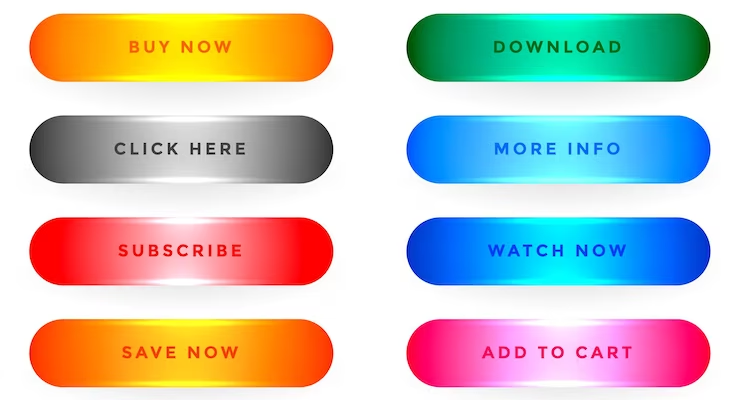In the realm of web design, buttons play a pivotal role as they beckon user interaction. Among the diverse button styles, rounded buttons stand out with their modern and visually appealing aesthetics. Infusing your web projects with these elegant rounded buttons, using the power of CSS, can elevate your design to the next level.
This comprehensive guide is your key to crafting these attractive rounded buttons. Along the way, you’ll gain insights and practical tips to enhance your button design skills.
The Essence of Rounded Buttons
Rounded buttons are a web design choice that brings forth buttons with gently curved corners, departing from the sharp angles. This characteristic lends them a warm and inviting look, making them a popular choice in contemporary web design.
The Appeal of Rounded Buttons
- Aesthetic Charm: Rounded buttons contribute to a visually pleasing user interface, aligning perfectly with modern design sensibilities;
- User-Friendly Design: The gentle curves of rounded buttons create a sense of comfort and encourage user engagement;
- Versatile Application: Rounded buttons are versatile and can be applied across different web elements, including call-to-action buttons, navigation menus, and form components.
Crafting Rounded Buttons with CSS: Step-by-Step Guidance
Establishing the HTML Structure
Begin by setting up the HTML structure for your button, typically involving a `<button>` or `<a>` element.
CSS Magic for Rounded Corners
Employ CSS to bring those rounded corners to life. Utilize the `border-radius` property to sculpt the level of roundness you desire.
Discover and create pill buttons quickly after watching this video
Adding Colors and Style
Elevate your button’s visual appeal by infusing it with background colors, text styling, and enchanting hover effects.
Crafting Engaging Button Effects
- Hovering into Interaction. Enrich your rounded buttons with hover effects that lend them dynamic interactivity. These can include alterations in color or size, signaling user engagement;
- The Active State. Define the behavior of your buttons when clicked or pressed. This immediate visual feedback enhances the overall user experience.
Prioritizing Accessibility
Contrast and Readability
Maintain an adequate contrast ratio between text and background colors, ensuring accessibility for all users, including those with visual impairments.
Focusing on Focus States
Design focus states that facilitate keyboard navigation. A clear and visible focus state ensures users can interact with your rounded buttons using keyboards.
Maintain a consistent button design across your website to establish a unified and user-friendly interface.
Embracing Responsive Design
Ensure that your rounded buttons gracefully adapt to varying screen sizes and devices by implementing responsive design techniques.
The Crucial Role of Testing and Optimization
Regularly test your rounded buttons across diverse browsers and devices to guarantee consistent functionality and appearance.
Elevating with Gradient Backgrounds
Experiment with gradient backgrounds to give your rounded buttons depth and a heightened sense of interactivity.
The World of CSS Pseudo-classes
Explore CSS pseudo-classes like `:before` and `:after` to create unique button styles, adding extra shapes or elements to your rounded buttons.
Adding Flair with Animated Transitions
Enhance user engagement by incorporating smooth and subtle animations into your rounded buttons. CSS transitions and animations infuse your buttons with polish and dynamic appeal.
Ensure that your rounded buttons adapt gracefully to diverse screen sizes and devices by employing CSS media queries to tailor button styles for various breakpoints.
Crafting for Mobile
When designing for mobile devices, prioritize touch-friendliness and ensure sufficient spacing to prevent inadvertent clicks.
- Browser Compatibility Matters. Conduct regular testing of your rounded buttons on a multitude of web browsers, including Chrome, Firefox, Safari, and Edge, to guarantee consistent display and functionality;
- The Art of Performance Optimization. Optimize your rounded buttons’ performance by minimizing superfluous CSS code and optimizing images if utilized in button backgrounds.
Conclusion
CSS-driven rounded buttons have emerged as an emblem of contemporary web design. This comprehensive guide has armed you with the skills and knowledge required to craft visually appealing, user-friendly, and responsive rounded buttons.
By following the step-by-step instructions, incorporating advanced techniques, and prioritizing accessibility and best practices, you can elevate your web projects’ design.
The essence of successful button design lies in user engagement and accessibility. Rounded buttons not only enhance the visual allure of your website but also contribute to an enjoyable user experience.
As you continue to hone your web design skills, mastery in the art of creating stylish and engaging rounded buttons with CSS will undoubtedly be a cornerstone in crafting web interfaces that captivate and gratify your audience.

